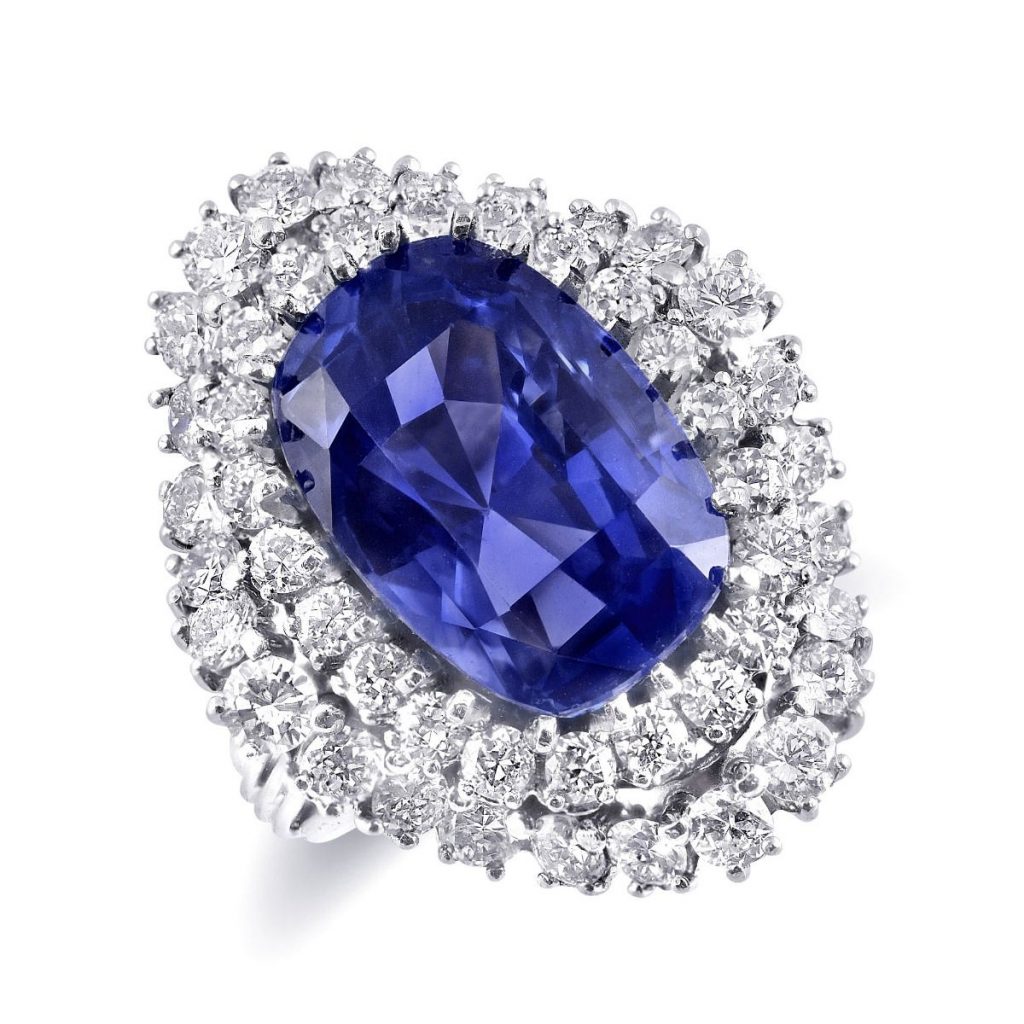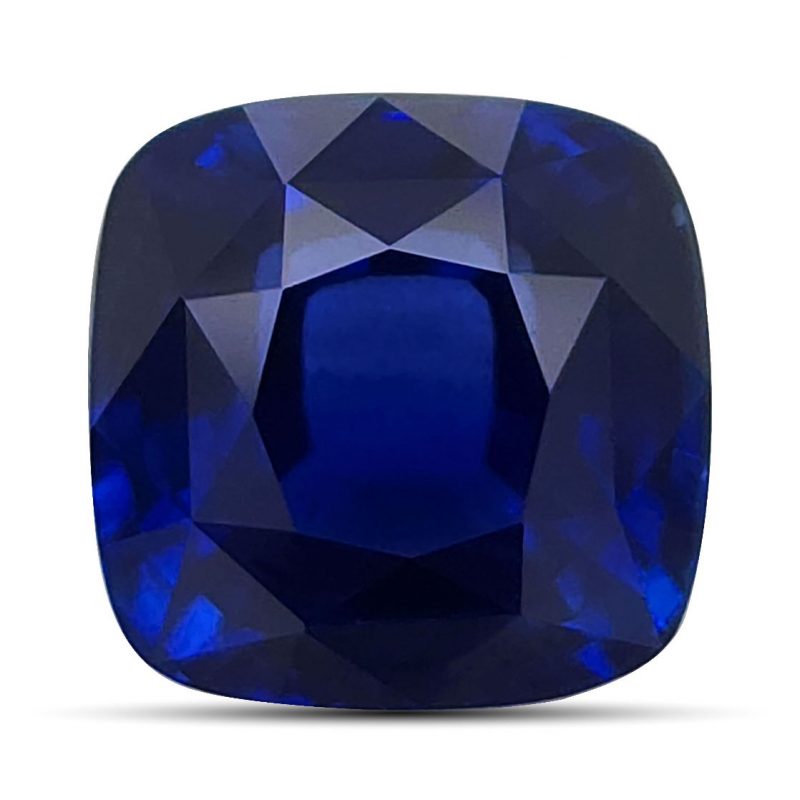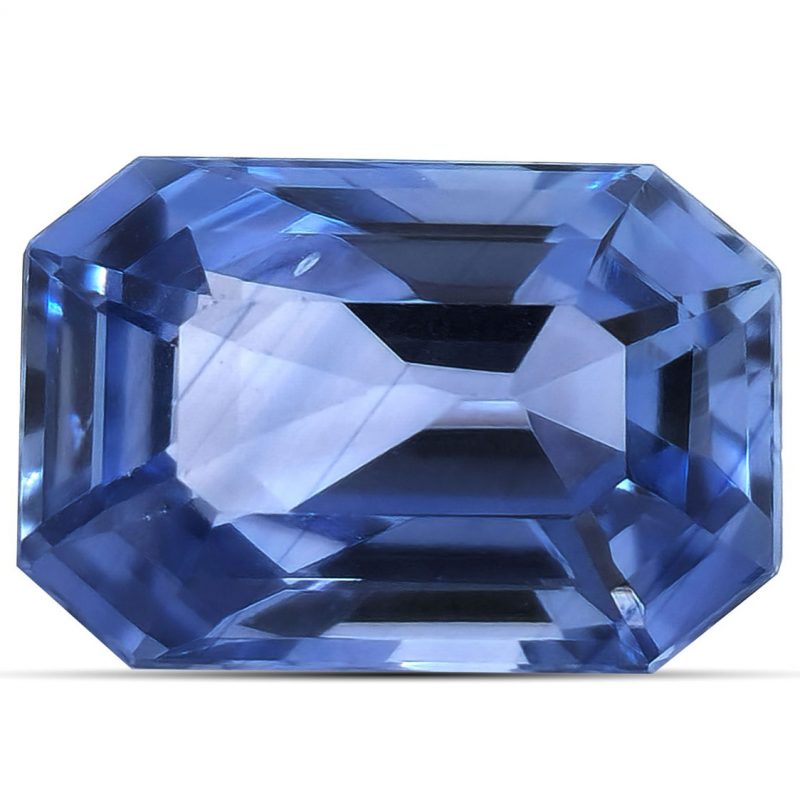
September babies can count themselves lucky to have the captivating sapphire as their birthstone. One of the four precious gems, this beautiful and durable stone has been beloved by legendary figures throughout history. Best known for it’s velvety blue tones, it also comes in a rainbow of other colors. Let’s take a closer look at the enigmatic and ever-enchanting sapphire.
The Traditional Blue Sapphire
The most expensive sapphires on the market come from the short-lived late 19th century Kashmiri mines in northern India. These stones have an unparalleled cornflower blue appearance and very rarely come up for sale. In 2015 a 27.68 carat emerald-cut example sold at Sotheby’s Hong Kong for an astounding $6 745 688!
Myanmar and Sri Lanka (the former Ceylon) also produce blue sapphires of exceptional quality. One of the most famous pieces of jewelry in the world, Princess Diana’s engagement ring, featured a 12 carat Ceylon sapphire enclosed by a diamond halo. Now worn by Kate Middleton, this timeless ring proves that the classics never go out of style.
The Magic of Sapphires
The traditional blue sapphire is the sapphire of myth and legend. Their color meant that they were often linked to the sea and the sky, as well as being endowed with calming and healing powers.
Around 3 000 years ago, King Solomon’s seal was an inscribed sapphire that supposedly gave him the ability to control the spirits of the earth, air and underworld. The ancient Persians thought that the Earth sat atop a sapphire pedestal which was mirrored in the color of the sky. For early Christians sapphires were emblems of heaven and in the 6th century the pope decreed that every cardinal should wear a sapphire on his right hand to promote piety and devotion to God.
In Medieval times sapphires were thought to enhance the immune system, end headaches and cure everything from epilepsy to cancer. There was also a belief, dating back to ancient Egyptian times, that sapphires were beneficial for eye problems.
Sapphires and Hollywood
In the 20th century blue sapphires were a favorite of early Hollywood screen sirens. Joan Crawford, Mae West and Vivien Leigh were just a few of the names who had impressive collections of sapphire jewelry. Elizabeth Taylor, a well-known jewelry aficionado had a number of spectacular sapphire pieces, including the magnificent Bulgari sautoir, given to her by Richard Burton for her 40th birthday, which featured a 52.72 carat Burmese blue sapphire at the center of the pendant. It went on sale at Christie’s in 2011 at an estimate of $600 000 – 800 000 and eventually sold for almost $6 million!
The Science of Sapphires
Sapphire is the name given to the mineral corundum, which in its purest state is actually colorless. For many years these stones were used as diamond simulants, but jewelry lovers are now appreciating them for their own particular beauty. Colorless corundum is relatively rare, however, as most corundum has color-causing trace elements within it. When iron and titanium are present we get the blue sapphire.
Feeling Fancy – Colored Sapphires
Thanks to different combinations of trace elements you’ll find a sapphire in any color you can think of – except for red. Chromium gives us pink sapphires and when enough chromium is present for the color to be deemed red, we call it a ruby! Green and yellow sapphires form when only iron is present, orange needs iron and chromium, and purple sapphires get their color thanks to a small amount of vanadium. Add more vanadium and you have a color-change sapphire.
These so-called ‘fancy’ sapphires were relatively unknown to the public before the 1990s, when new deposits were discovered in East Africa and opened up the market. Australia and Montana in the US are also major sources of sapphires, in particular the unusual parti-color sapphire which has two or three distinct bands of color within the stone. These locations also produce the increasingly popular teal sapphire, a beautiful greeny-blue stone sometimes referred to as mermaid sapphire.
No mention of fancy sapphires would be complete without the magnificent padparadscha. Originally from Sri Lanka, but now also found in Africa, this rare orangey-pink stone gets its name from the Sinhalese word for lotus blossom. Covering a range of dreamy tropical sunset tones, it’s not hard to see why the demand for this stone keeps rising.
Star Sapphires – Talisman of travelers
Some cabochon-cut sapphires appear to have a white six- or twelve-rayed star beneath their surface. This optical illusion is known as asterism and it occurs because of small needle-like inclusions within the structure of the stone. Star sapphires have long been believed to be have protective properties and the ability to bring good luck to travelers. Legend has it that some are so powerful that even a single glimpse would bring good fortune!
The September Birthstone
Sapphires rank a 9 on the Mohs scale of hardness (second only to diamonds when it comes to natural stones) and have excellent overall durability, which makes them ideal stones for jewelry. At JupiterGem we have a large collection of some of the finest sapphires the world has to offer and we’d love to help you choose yours… Whether you like the traditional blue, or prefer something a bit different, there is certain to be a sapphire for you!






